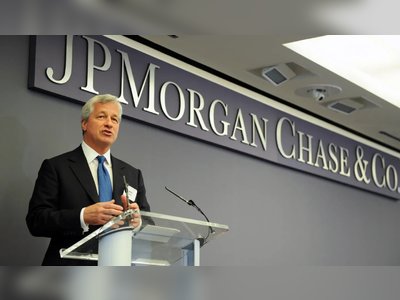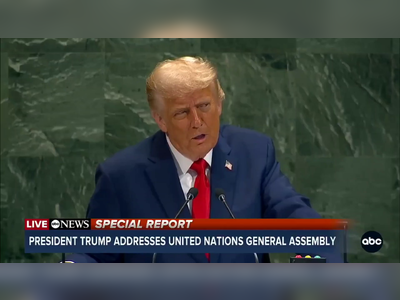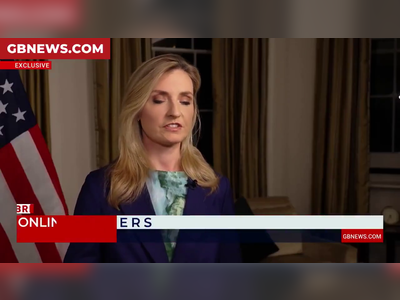Global Inflation Rates Decline Amidst Economic Uncertainties
Several countries report a decrease in inflation rates, reflecting diverging economic conditions and central bank policies.
Inflation rates globally have started to show signs of decline, according to recent data from various economic agencies and national statistics organizations.
As of August 2023, inflation in the European Union decreased to 5.3%, down from 6.1% in July, while the United States reported an inflation rate of 3.7%, slightly lower than the previous month's 3.8%.
These figures suggest a general easing of price pressures in several regions, although significant disparities remain across different economies.
In the Eurozone, country-specific data illustrated varied results.
Germany's inflation rate fell to 6.0%, its lowest since early 2022, driven mainly by easing energy prices.
Conversely, countries such as Hungary and Slovakia experienced inflation rates above 10%, with Hungary reporting one of the highest rates at 16.4%, attributed to persistent food and energy costs.
In Asia, Japan's consumer price index recorded a year-on-year increase of 3.2%, indicating a continued trend of price rises but still below the peak seen in 2022. The Bank of Japan has maintained its ultra-loose monetary policy despite these inflationary pressures, marking a contrast to the tightening strategies adopted by many Western central banks.
Central banks, particularly in the United States and Europe, have responded to persistent inflation by implementing aggressive interest rate hikes over the past year.
The Federal Reserve raised its benchmark interest rate to a range of 5.25%-5.50%, while the European Central Bank has increased rates to 4.25% in its ongoing efforts to rein in inflation.
Despite these measures, challenges remain.
Supply chain disruptions, exacerbated by geopolitical tensions and the lingering effects of the COVID-19 pandemic, continue to impact price stability in several regions.
Additionally, growing concerns over the economic impact of higher borrowing costs have led to discussions among policymakers regarding the balance between curbing inflation and promoting growth.
Emerging market economies face unique challenges as well.
Countries such as Turkey and Argentina struggle with hyperinflation, reporting rates of 47.2% and 113.4% respectively.
These nations are navigating complex fiscal landscapes, with high inflation severely affecting purchasing power and financial stability.
The global food price index, published by the Food and Agriculture Organization, has also seen fluctuations, with a slight decline noted in recent months due to favorable weather conditions and increased harvests in major producing countries.
However, adverse weather patterns and ongoing conflicts in key agricultural regions continue to pose risks to food security in numerous nations.
Investment analysts are closely monitoring these dynamics as they assess the future trajectory of global economic growth.
Market volatility remains elevated, influenced by both inflationary trends and central bank decisions.
As countries strive for stability in their economic environments, the interplay of local and international factors will likely shape inflationary pathways and monetary policy responses.
As of August 2023, inflation in the European Union decreased to 5.3%, down from 6.1% in July, while the United States reported an inflation rate of 3.7%, slightly lower than the previous month's 3.8%.
These figures suggest a general easing of price pressures in several regions, although significant disparities remain across different economies.
In the Eurozone, country-specific data illustrated varied results.
Germany's inflation rate fell to 6.0%, its lowest since early 2022, driven mainly by easing energy prices.
Conversely, countries such as Hungary and Slovakia experienced inflation rates above 10%, with Hungary reporting one of the highest rates at 16.4%, attributed to persistent food and energy costs.
In Asia, Japan's consumer price index recorded a year-on-year increase of 3.2%, indicating a continued trend of price rises but still below the peak seen in 2022. The Bank of Japan has maintained its ultra-loose monetary policy despite these inflationary pressures, marking a contrast to the tightening strategies adopted by many Western central banks.
Central banks, particularly in the United States and Europe, have responded to persistent inflation by implementing aggressive interest rate hikes over the past year.
The Federal Reserve raised its benchmark interest rate to a range of 5.25%-5.50%, while the European Central Bank has increased rates to 4.25% in its ongoing efforts to rein in inflation.
Despite these measures, challenges remain.
Supply chain disruptions, exacerbated by geopolitical tensions and the lingering effects of the COVID-19 pandemic, continue to impact price stability in several regions.
Additionally, growing concerns over the economic impact of higher borrowing costs have led to discussions among policymakers regarding the balance between curbing inflation and promoting growth.
Emerging market economies face unique challenges as well.
Countries such as Turkey and Argentina struggle with hyperinflation, reporting rates of 47.2% and 113.4% respectively.
These nations are navigating complex fiscal landscapes, with high inflation severely affecting purchasing power and financial stability.
The global food price index, published by the Food and Agriculture Organization, has also seen fluctuations, with a slight decline noted in recent months due to favorable weather conditions and increased harvests in major producing countries.
However, adverse weather patterns and ongoing conflicts in key agricultural regions continue to pose risks to food security in numerous nations.
Investment analysts are closely monitoring these dynamics as they assess the future trajectory of global economic growth.
Market volatility remains elevated, influenced by both inflationary trends and central bank decisions.
As countries strive for stability in their economic environments, the interplay of local and international factors will likely shape inflationary pathways and monetary policy responses.











